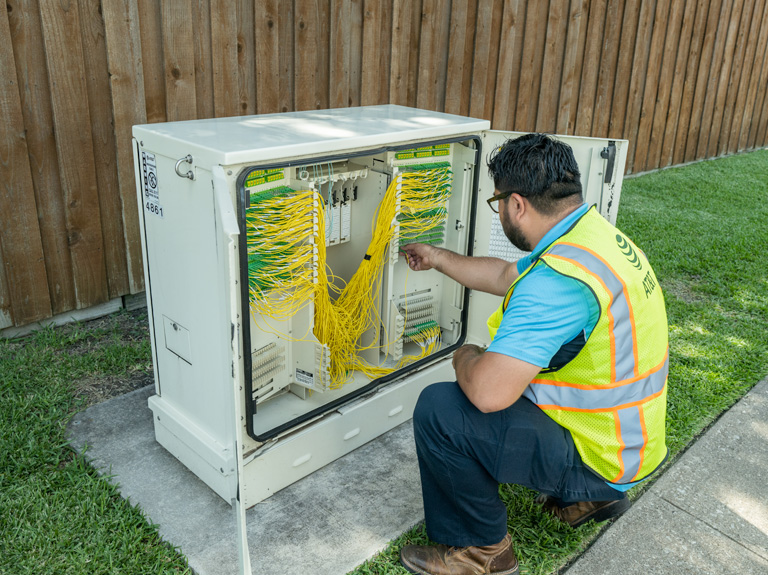AT&T’s John Donovan Visits Quantum Network Being Built with the California Institute of Technology
AT&T* Communications chief executive officer John Donovan will visit the quantum network being hosted at Fermilab and developed as part of a long-term research and development program between AT&T and the California Institute of Technology (Caltech) this week. As part of the collaboration, the AT&T Foundry and Caltech are bringing together experts in academia, industry and government to focus on building a scalable quantum network.
Located in Batavia, Illinois, Fermilab is a U.S. Department of Energy national laboratory specializing in high-energy particle physics. The Fermilab Quantum NETwork (FQNET) system is a photonics, optical fiber-based local quantum teleportation network that was built starting in October 2017 and commissioned in the Fall of 2018. The resulting quantum network system will serve as a testbed facility for future R&D quantum communication technologies and protocols. Eventually, the goal is to build a quantum internet that will connect quantum computers and devices across the world – much like the internet today connects “classical” devices.
“Quantum computing has the potential to solve problems and crunch data in ways far beyond the capacity of classical computing,” said Donovan. “And linking quantum computers into a quantum network will radically boost these capabilities. The researchers who are building and commissioning the quantum network have remarkable drive and ambition. I look forward to seeing the Department of Energy’s Paul Dabbar and the team of scientists from AT&T, Caltech, JPL and Fermilab bring this network to life.”
Directed by Maria Spiropulu, Caltech’s Shang-Yi Ch’en Professor of Physics, the project brings together various commercial and research state-of-the art quantum devices, including:
- Cryogenic single-photon nanodetectors developed at Jet Propulsion Laboratory (JPL)’s Microdevices lab;
- Quantum entanglement photonic sources and lasers commissioned at Caltech;
- Control and data acquisition systems developed for big data science applications in high energy physics and adapted for the quantum network platform.
The FQNET system is currently being upgraded to achieve high-fidelity teleportation between remote nodes within the Laboratory (around 2.5 km) and will further expand to distribute quantum information across tens of kilometers.
Commercial and research-grade quantum devices are being benchmarked in the system and the vision is to architect solutions for high-rate, long-distance quantum communications. The project also aims to engage top researchers and industries to solve deep, underlying science challenges, as well as scale technology applications that could lead to the era of the quantum internet.
Earlier in the fall, Donovan attended the White House Summit on quantum information science and the public-private quantum computing strategy. The Summit, hosted by the Office of Science and Technology Policy, gathered academics, researchers and major technology company representatives. The discussion featured government officials from the National Science Foundation, the Department of Energy, the National Institute of Standards and Technology and the Defense Department. The National Quantum Initiative Act, which provides for a coordinated Federal program to accelerate quantum research and development for the economic and national security of the United States, was passed unanimously by the Senate last week, and is headed to the House for approval.
“This quantum initiative will propel research on quantum computing in the U.S. I also expect it to stimulate industry investment, innovation and collaboration with academia in all major quantum technologies areas,” said Donovan. “Quantum computing and networking are extremely complex, and will require a coordinated effort among industry, researchers and government to unleash their amazing potential and keep the U.S. at the forefront of innovation.”



